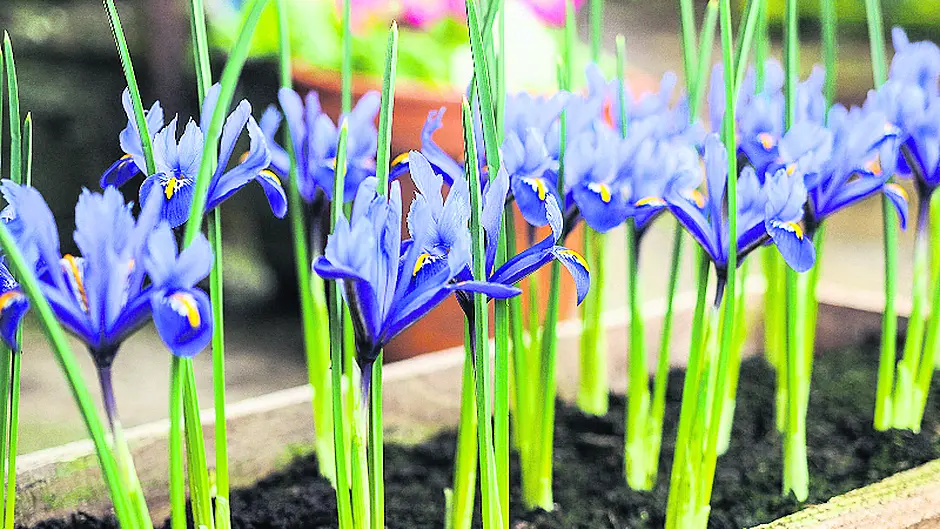Gardening with Joyce Russell
Gardens have suffered a bit this winter and it is a good idea to get outside and take a look at what can be done to help restore some order. Some shrubs were knocked by wind in my garden, but a bit of a shove and a new stake or two has straightened them up again.
If roots have been damaged then they may not thrive, but it is worth giving them a chance: provide a bit of support, trim any broken or straggling branches, and wait a few months before deciding to remove anything that may still recover.
The heavy rains will have washed a lot of nutrients out of the soil and this is a good time to think about extra feeding. Crops that have stood through the winter can put on a growth spurt if there is a bit of sun and soil temperatures are warm enough.
Try scattering woodash, or powdered seaweed, between onion and garlic rows to give a potash boost just when these plants will need it. These are shallow rooting plants so they need lots of nutrients near to the soil’s surface. You might be surprised at the onions you can grow if you remember to give them a feed in January.
Cabbages, salad crops, spinach and chard can all benefit from a liquid feed watered onto the bed where they grow. Try to avoid the leaves and always make sure the soil is damp before applying a liquid feed. If the weather is settled and fine then this is a good time of year to dig manure into empty beds.
Feed fruit trees
It may seem early to feed trees, before they have started into growth, but a January feed allows time for nutrients to be washed down to where they are needed close to the roots.
You can clear round fruit trees and use manure as a mulch, or keep grass short all round and scatter a dried feed in a circle as wide as the spread of the roots (roughly the same as the spread of the branches above).
Soft fruit bushes also appreciate a feed. Blackcurrants are greedy and love a layer of nitrogen rich manure. You can even use fresh poultry manure round these bushes, although this is too harsh for most other plants.
Feed raspberries and redcurrants more sparingly and with compost or well-rotted manure. Use a good organic dried feed if that’s all you have, but watch out for dogs or foxes damaging roots by digging to reach mixtures such as fish blood and bone meal.
Bulbs
I’ve never known such a year for early flowering bulbs, but it’s lovely to see the lavish splashes of colour among the mud or frozen earth — we’ve had both in quick succession and probably will have more again before spring arrives.
Some flowers don’t last long so make sure to enjoy them while they are there. I like to have some bulbs in containers by the door of the house and I am cheered every time I go in or out. It’s easy to empty the contents and plant them in a corner of the garden when flowering is finished — leaves will feed the bulbs for several weeks to ensure enough energy is stored to produce flowers next year. Replant the empty containers to provide colour through the spring and summer months.
Winter salad
Again, I can only say that it has been an odd winter so far, but my plants in the polytunnel look more heavily picked than they usually would. The same can be said for the kale plants outdoors. I think that the mild weather confused them into attempting to bolt and even though I cut off any flowering spikes, they still think that the time of lavish leaf production is past.
I’m sure there will be a second flush of growth when the days lengthen a bit more and some warmth kicks in, so it is worth looking after these plants and waiting for them to produce more harvestable leaves.
In the meantime, I’m pleased to have made a few later sowings of rocket, mizuna and lamb’s lettuce. These are just starting to come into their own now and should crop in a more regular pattern from now on. If your salad has bolted and there’s none left to pick, you can try some early sowings in a greenhouse, polytunnel, or under a cloche or cold frame. You should get some good growth with the increasing daylight and will have fresh leaves to pick in a few short weeks.
Aubergines
Just a reminder to sow seed within the next two weeks. Choose early varieties like Moneymaker, Bonica or Black Beauty. Sow in a pot of good compost, cover with a plastic bag and keep at 20C.






